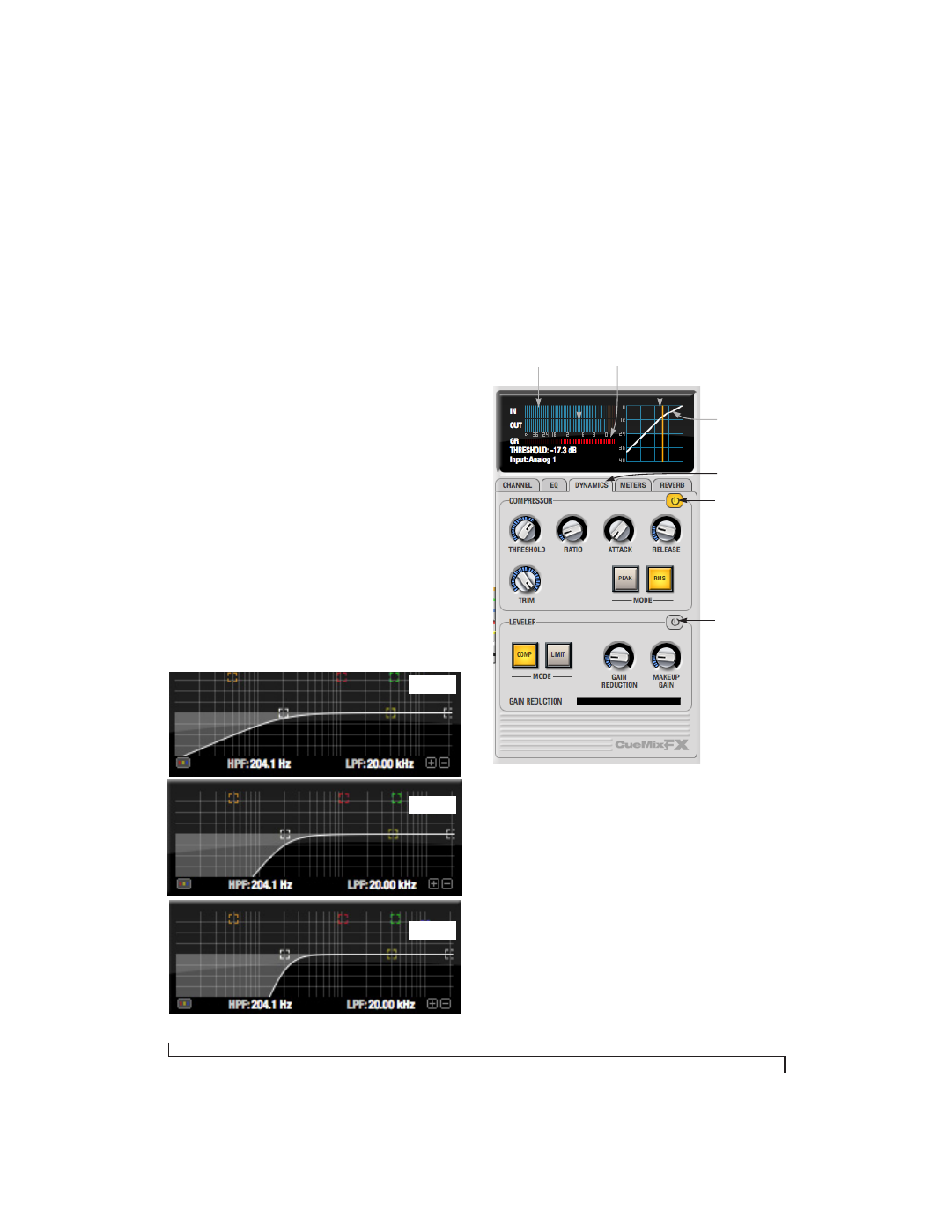Low pass and high pass filters, The dynamics tab, Enabling dynamics – MOTU Track16 - Desktop Studio FireWire/USB 2.0 Interface User Manual
Page 74

C U E M I X F X
74
Overshoot tends to produce more of what one
would expect to hear when applying shelving and
is therefore considered to be more musical than
shelving without overshoot. This effect, which has
gained tremendous popularity among audio
engineers, was first made popular in original Neve
series EQs and later in the SSL G series.
At maximum the maximum Q setting of 3.00, the
overshoot peaks at half the total boosted (or cut)
gain. For example, with a maximum gain setting of
+20dB, the loss in the overshoot region is -10 dB.
Overshoot curves are symmetrical for both cut and
boost.
Low pass and high pass filters
The Vintage EQ low and high pass filters are similar
to those found in most conventional parametric
EQs (which usually have a fixed slope of 12 dB per
octave), except that Vintage EQ provides six
different slope (roll off) settings: 6, 12, 18, 24, 30
and 36 dB per octave. This control over the shape
of the “knee” gives you a great deal flexibility and
control for a wide variety of applications.
Figure 9-20: The low pass filter with three example slope settings.
The Dynamics tab
The Dynamics tab (Figure 9-21) displays the
Dynamics processing settings for the input or
output channel that currently has the focus. Click
any focus button in the Inputs or Outputs tab to
view the Dynamics tab settings for the channel.
Figure 9-21: The Dynamics tab.
Enabling Dynamics
Each input and output channel has a global
Dynamics enable/disable
button (Figure 9-3 and
Figure 9-6). This button enables or disables all
dynamics processing for the channel. In addition,
the Dynamics tab has two different dynamics
processors, the Compressor and Leveler, which can
be individually enabled or disabled (Figure 9-21)
for the channel.
Slope = 6
Slope = 18
Slope = 36
Compressor
enable/disable
Leveler
enable/disable
Dynamics tab
Input
level
meter
Output
level
meter
Gain
reduction
meter
Threshold
Trim
